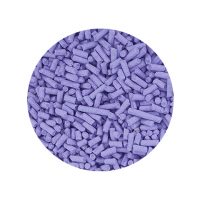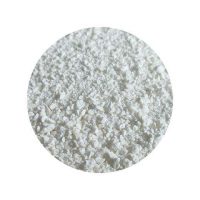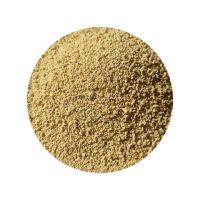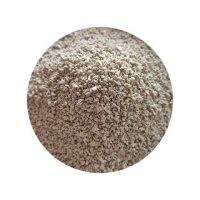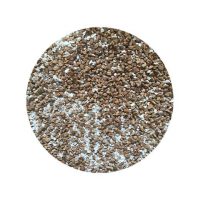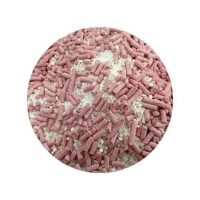Clay cat litter has been a popular choice among pet owners for many years. However, there are concerns about its potential health risks for cats.
In this blog post, we’ll delve into the details of clay cat litter, including:
- Types of clay cat litter: Exploring different varieties and their potential health concerns.
- Dust and respiratory issues: Assessing the risk of respiratory problems associated with clay litter.
- Ingestion hazards: Examining the potential dangers of cats ingesting clay litter.
- Alternative litter options: Exploring safer and healthier alternatives to clay-based litters.
Whether you’re a new cat owner or simply looking to explore safer litter options, this guide will provide valuable information.
What is Clay Cat Litter
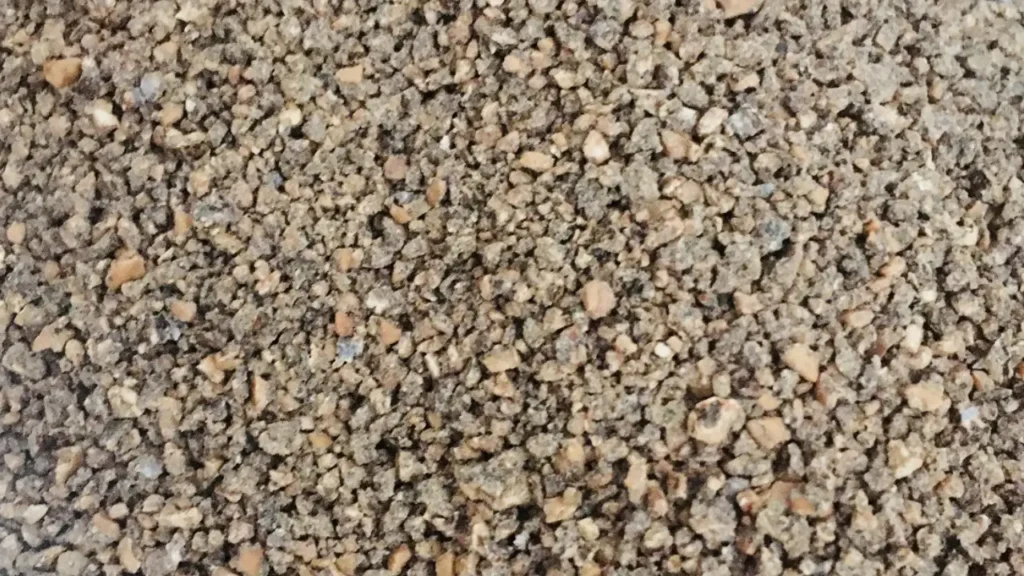
Clay cat litter is one of the most popular types of cat litter available. It’s made from clay minerals, which are known for their absorbent properties. There are two main types of clay cat litter:
- Clumping clay cat litter: This type forms clumps when exposed to moisture, making it easy to scoop and dispose of waste.
- Non-clumping clay cat litter: This type doesn’t form clumps, but it’s still effective at absorbing moisture.
Clay cat litter is often affordable and readily available. It’s also effective at controlling odors and absorbing moisture. However, there are some potential health concerns associated with clay cat litter that pet owners should be aware of.
What is Clay Cat Litter Made Of
Clay cat litter is primarily made from clay minerals.
These minerals are known for their absorbent properties, making them effective at trapping moisture and controlling odors. The specific type of clay used in cat litter can vary, but common options include bentonite clay and kaolin clay.
Is Clay Litter Bad for Cats
Clay cat litter has been a popular choice for pet owners for many years. While it’s generally considered safe for cats, there are some potential health concerns to be aware of.
Potential Health Risks Associated with Clay Cat Litter
- Dust: Some clay cat litters can be dusty, which may irritate your cat’s respiratory system. This is especially true for cats with allergies or respiratory sensitivities.
- Ingestion: If a cat accidentally ingests clay litter, it can cause digestive problems. While most cats will avoid eating litter, it’s still a risk.
- Tracking: Clay cat litter can track easily, leading to mess and potential ingestion of harmful substances.
Alternative Litter Options
If you’re concerned about the potential health risks associated with clay cat litter, there are several alternatives available:
- Silica gel cat litter: This type of litter is highly absorbent and can help control odors. It’s also generally less dusty than clay-based litters.
- Recycled paper cat litter: Made from recycled paper, this option is biodegradable and can be a good choice for environmentally conscious pet owners.
- Wheat or corn-based cat litter: These natural options are also biodegradable and can be a healthier alternative for some cats.
It’s important to consult with your veterinarian if you have concerns about your cat’s health or the litter you’re using. They can provide personalized advice based on your cat’s specific needs.
By choosing a safe and appropriate cat litter, you can help ensure your cat’s overall well-being.
Is Clay Cat Litter Bad for the Environment
Clay cat litter can hurt the environment.
Here’s why:
- Non-biodegradable: Clay is a natural mineral, but it is not biodegradable. This means it can take a long time to decompose in landfills, contributing to environmental pollution.
- Dust: Clay cat litter can be dusty, which can contribute to air pollution.
- Tracking: Clay cat litter can track easily, leading to litter being spread throughout your home and potentially into the environment.
If you’re concerned about the environmental impact of your cat litter, there are more sustainable options available. Biodegradable cat litters made from materials like recycled paper or corn are a better choice for the environment.
By choosing a biodegradable cat litter, you can help reduce your carbon footprint and contribute to a healthier planet.
What Cat Litter Has Bentonite Clay
Many cat litters contain bentonite clay. Bentonite clay is a natural mineral known for its absorbent properties, making it an effective material for trapping moisture and controlling odors.
Here are some common types of cat litter that contain bentonite clay:
- Clumping cat litter: This type forms clumps when exposed to moisture, making it easy to scoop and dispose of waste without disturbing the rest of the litter.
- Non-clumping cat litter: This type doesn’t form clumps but still absorbs moisture effectively.
- Scented cat litter: Some bentonite cat litters are infused with fragrances to mask odors.
When choosing a bentonite cat litter, consider the following factors:
- Clumping: Decide if you prefer clumping or non-clumping litter based on your preferences and cleaning habits.
- Scent: Choose a scent that your cat won’t find offensive, or opt for unscented litter.
- Dustiness: Some bentonite cat litters can be dusty, so look for low-dust or dust-free options.
By carefully considering these factors, you can select a bentonite cat litter that meets your cat’s needs and your preferences.
How to Dispose of Clay Cat Litter
Proper disposal of clay cat litter is important to protect the environment and prevent the spread of disease.
Here are some guidelines for disposing of clay cat litter:
- Avoid flushing: Never flush cat litter down the toilet, as it can clog your plumbing system.
- Seal in a bag: Place the used cat litter in a sealed garbage bag.
- Dispose of in the trash: Place the sealed bag in your regular household trash.
- Check local regulations: Some municipalities may have specific guidelines for disposing of cat litter. Be sure to check your local regulations for any restrictions or requirements.
If you’re concerned about the environmental impact of clay cat litter, consider using a biodegradable alternative. There are many eco-friendly options available that are made from recycled materials or natural fibers.
By following these guidelines, you can ensure that your cat litter is disposed of responsibly and safely.
How to Transition Cat From Clay Litter to Pellets
Transitioning your cat from clay litter to pellets can be a smooth process with the right approach. Here are some tips to help your cat adjust:
- Gradual Introduction: Start by mixing a small amount of pellet litter with the clay litter in the litter box. Gradually increase the proportion of pellets over several days or weeks until your cat is using pellets exclusively.
- Clean the Litter Box: Ensure the litter box is clean and fresh before introducing the new litter. This can help your cat accept the change more readily.
- Patience is Key: Some cats may take longer to adjust to the new litter. Be patient and give your cat time to get used to the different texture and scent.
- Monitor Your Cat: Keep an eye on your cat’s behavior during the transition. If your cat shows signs of stress or discomfort, such as avoiding the litter box or urinating outside, you may need to slow down the transition process.
- Consider Litter Box Placement: If your cat is hesitant to use the new litter, try moving the litter box to a different location. Sometimes, a change of scenery can help.
Remember, every cat is different. Some cats may adapt quickly, while others may take longer. Be patient and consistent, and your cat should eventually adjust to the new litter.
Is Clay Cat Litter Biodegradable
No, clay cat litter is not biodegradable. Clay is a natural mineral, but it does not break down naturally in the environment. This means it can take a long time to decompose in landfills, contributing to environmental pollution.
If you’re concerned about the environmental impact of your cat litter, there are more sustainable options available, such as biodegradable litters made from recycled paper or corn.
Is Clay Cat Litter Compostable
No, clay cat litter is not compostable. It’s made from clay minerals, which are not biodegradable. This means they won’t break down naturally in a compost pile.
If you’re looking for a more environmentally friendly option, consider using biodegradable cat litter made from materials like recycled paper or corn. These types of litter can be composted and are better for the environment.
Is Crystal Cat Litter Better Than Clay
Crystal cat litter generally offers several advantages over traditional clay-based litters:
- Superior Absorption: Crystal cat litter is highly absorbent, effectively controlling odors and moisture.
- Dust-Free: Unlike clay-based litters, crystal cat litter is typically dust-free, reducing the risk of respiratory irritation for both you and your cat.
- Lightweight: Crystal cat litter is lightweight and easy to handle, making it convenient for pet owners.
- Long-Lasting: Due to its high absorbency, crystal cat litter can last longer than traditional clay-based litters, reducing the frequency of litter changes.
However, there are also some considerations:
- Cost: Crystal cat litter is often more expensive than clay-based litters.
- Tracking: Crystal cat litter can track easily, especially if your cat is prone to digging.
- Clumping: While some crystal cat litters are clumping, others are non-clumping. The clumping ability can vary depending on the specific brand.
Ultimately, the best choice between crystal cat litter and clay cat litter depends on your individual needs and preferences. If you prioritize cleanliness, convenience, and the health of your cat, crystal cat litter might be a great option. However, if you’re on a budget or prefer a more traditional litter, clay cat litter may be suitable.
It’s also worth noting that some cats may have personal preferences for one type of litter over another. You may need to experiment with different options to find the best fit for your feline friend.
Conclusion
Clay cat litter has been a mainstay in cat ownership for decades. While generally safe, it’s important to be aware of both its benefits and drawbacks.
Ultimately, the decision of whether to use clay litter is yours. If you’re concerned about the potential health risks or environmental impact, alternative options exist like crystal, paper-based, or corn-based litters.
Ready to explore the best clay litter options for your cat?
We offer a wide variety of high-quality clay cat litter at competitive prices. Whether you prioritize clumping, odor control, or dust control, we have a litter to suit your needs.
Contact us today to request a quote and find the perfect clay cat litter for your furry friend!


